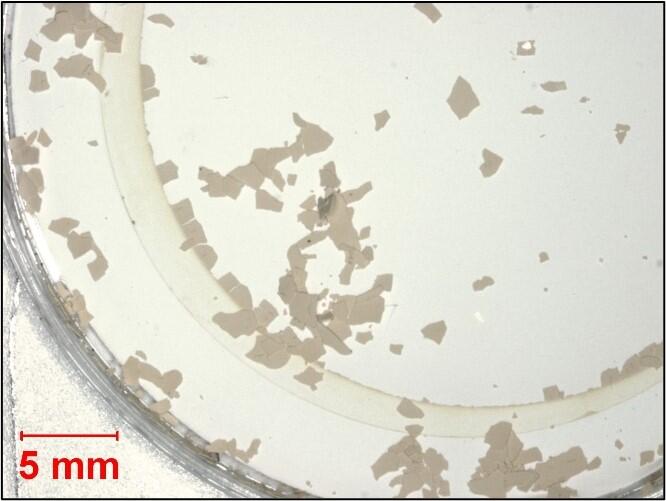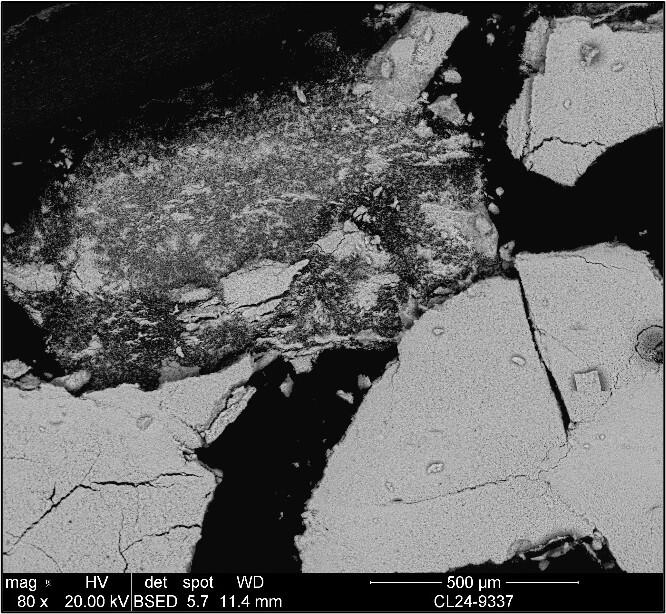Filters serve the vital function of protecting equipment from fluid contaminants that degrade normal system performance. Besides the typical fluid and environmental particulates that filters are designed to remove, filters can also collect debris from chemical incompatibility between materials, corrosion products, unintentional flow ingress, or even biological activity. While the short-term response to restore normal process operation is simple filter replacement, the long-term solution may require a deeper understanding of the nature of the filter blockage, especially if it is a reoccurring problem.

Optical stereoscope image of debris collected after filtering.

Corresponding SEM image of the same debris.

Color mapping of SEM reveals distribution of contaminants.
Filter debris analysis at Southwest Research Institute (SwRI) is a comprehensive investigation of the foreign material causing these blockages. It involves deconstruction of the filter housing and element by SwRI technicians, extraction and concentration of solids of interest and debris from the filter media into a suitable laboratory sample, and instrumental analysis of the sample to determine its composition.
Filter Debris Analysis Services
SwRI’s Fuels and Lubricants Research Facility and Metallurgical Analysis Laboratory coordinate the evaluation of material collected from plugged filters. A solvent rinse of the debris over a 0.8 µm membrane helps to wash away potential interferences such as residual fuel. The resulting solids are dried in an oven and then subjected to various analytical techniques to assist in identification, such as:
- Optical microscopes and Digital Photography
- Energy dispersive spectroscopy (EDS)
- Powerful field emission scanning electron microscope (FE SEM)
- X-Ray diffractometer (XRD)
- Fourier-transform infrared spectrometer (FTIR)
- Raman spectrometer
The data output from these technical approaches includes:
- Topographical surface images
- Confirmation of crystalline/amorphous compounds
- Dimensional information
- Compositional information
- Contaminant composition
- Chemical structure
